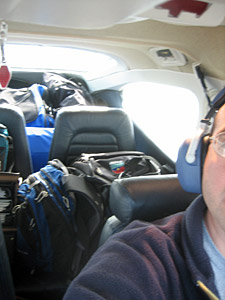jmaynard
Cleared for Takeoff
- Joined
- Jun 7, 2008
- Messages
- 1,487
- Location
- Fairmont, Minnesota
- Display Name
Display name:
Jay Maynard
I just submitted this letter to AVweb's editor:
Aviation Consumer and AOPA Pilot both seem to be answering some amount of belief that an LSA can't be a cross-country airplane. I don't understand what's the big deal, myself.
Planning a long VFR cross-country trip is the same whether the aircraft is a Cub or a Cirrus. You have to fit fuel, pilot, passenger, and other payload into the aircraft's capabilities, and you have to plan around weather and be flexible in diverting if things go to pot.
I flew my AMD Zodiac XLi home from the factory in Georgia to southern Minnesota. I didn't go straight home, either. I visited friends in North Carolina, Arkansas, and Texas along the way. The total trip was over 2000 miles, and took nine days in all, with 25.0 hours flight time enroute and an average fuel burn of 5.8 GPH. Overall, there wouldn't have been anything done differently if I'd been flying a 172, aside from having to spend more money on fuel for the same airspeed.
LSAs are quite capable aircraft. Sure, a Cub qualifies as one, but an LSA doesn't have to be at that level of capability, and it would do pilots well to stop thinking of them that way.
Aviation Consumer and AOPA Pilot both seem to be answering some amount of belief that an LSA can't be a cross-country airplane. I don't understand what's the big deal, myself.
Planning a long VFR cross-country trip is the same whether the aircraft is a Cub or a Cirrus. You have to fit fuel, pilot, passenger, and other payload into the aircraft's capabilities, and you have to plan around weather and be flexible in diverting if things go to pot.
I flew my AMD Zodiac XLi home from the factory in Georgia to southern Minnesota. I didn't go straight home, either. I visited friends in North Carolina, Arkansas, and Texas along the way. The total trip was over 2000 miles, and took nine days in all, with 25.0 hours flight time enroute and an average fuel burn of 5.8 GPH. Overall, there wouldn't have been anything done differently if I'd been flying a 172, aside from having to spend more money on fuel for the same airspeed.
LSAs are quite capable aircraft. Sure, a Cub qualifies as one, but an LSA doesn't have to be at that level of capability, and it would do pilots well to stop thinking of them that way.







